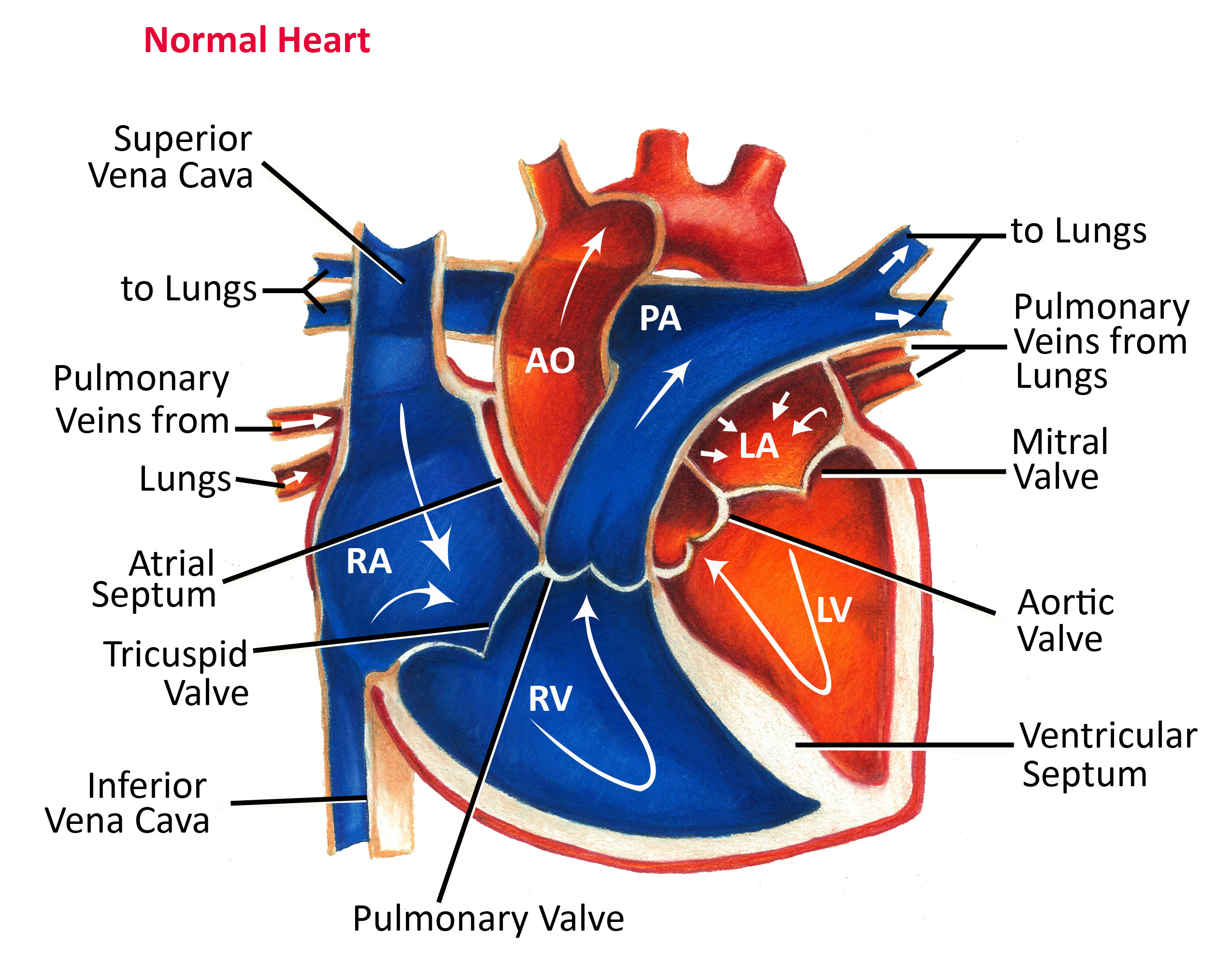Normal Heart Anatomy and Blood Flow

The heart has four separate chambers. The upper two chambers are called the right and left atria (RA and LA). The atria are the receiving chambers for blood returning from the body and the lungs. The wall dividing the two atria is called the atrial septum. The lower two chambers are the right and left ventricles (RV and LV). The ventricles are muscular chambers responsible for pumping blood to the body and lungs. The wall dividing the two ventricles is called the ventricular septum. There are four separate valves in the heart: the tricuspid valve, pulmonary valve, mitral valve, and aortic valve. The valves open to allow blood to flow forward and close to prevent any backflow. Finally, there are a number of veins and arteries attaching to the heart. The superior and inferior vena connect to the right atrium, while the pulmonary veins connect to the left atrium. The pulmonary artery connects the right ventricle to the lungs, while the aorta connects the left ventricle to the body.
The job of the heart is to pump blood to both the heart and the body. Normally blue blood (blood without oxygen) returns from the upper portion of the body by way of the superior vena cava and from the lower portion of the body by way of the inferior vena cava. After collecting in the right atrium, it passes to the right ventricle. The right ventricle then pumps the blue blood out to the lungs through the pulmonary artery. In the lungs, the blood collects oxygen and turns a red color. Red blood (blood with oxygen) returns back from the lungs by way of the pulmonary veins. After collecting in the left atrium it passes into the left ventricle and from there is pumped to the body by way of the aorta.
